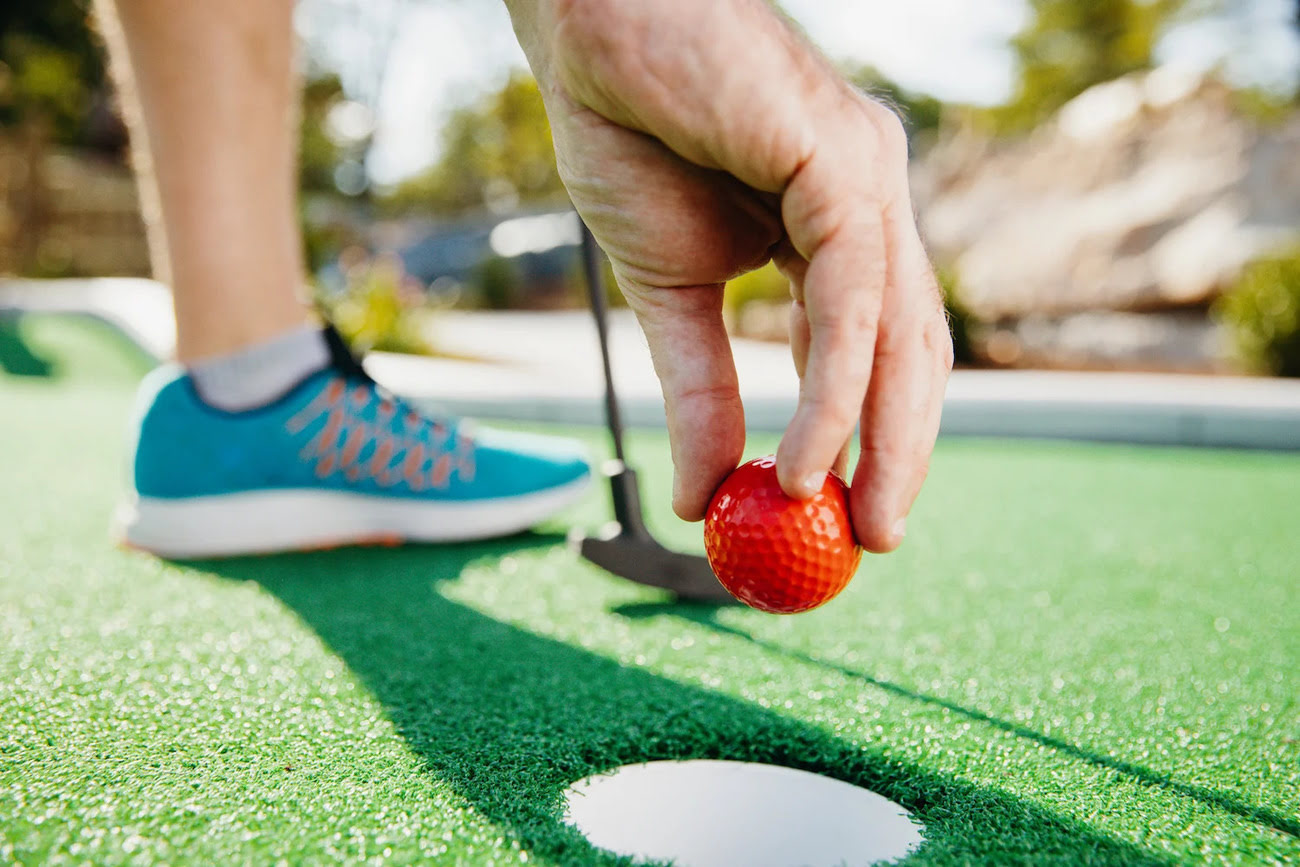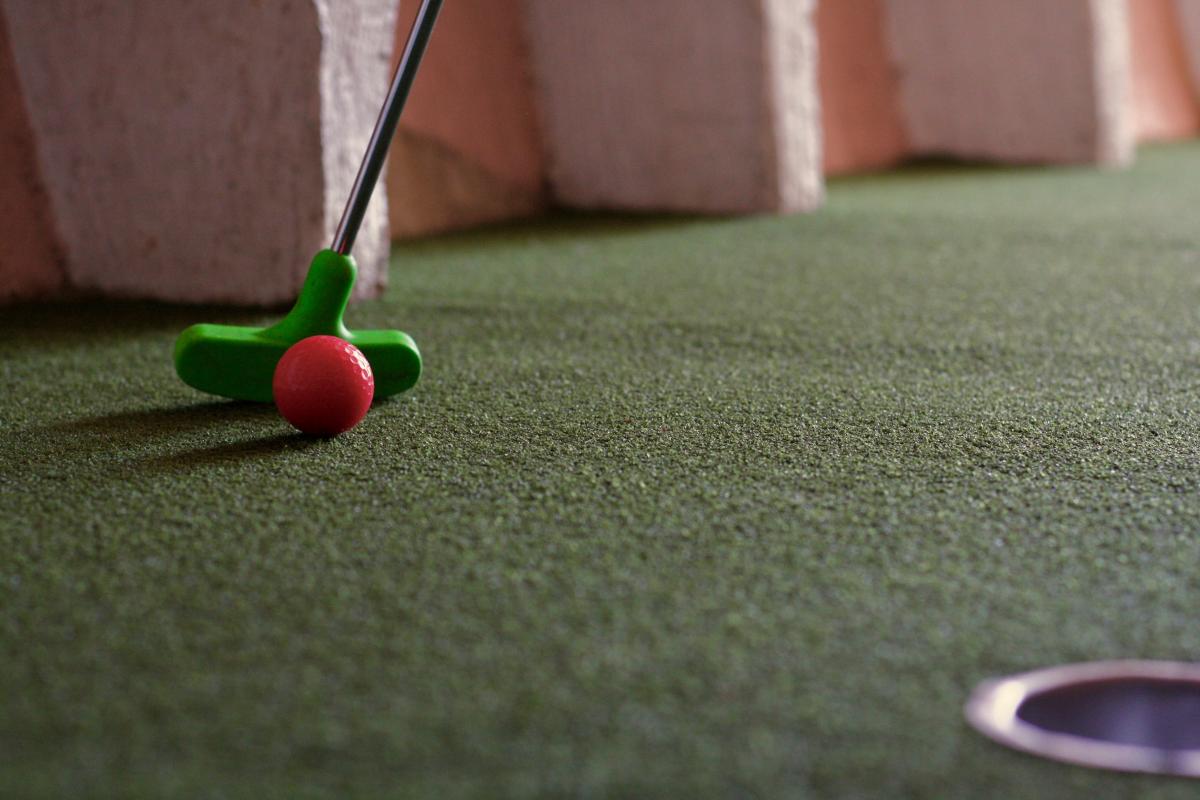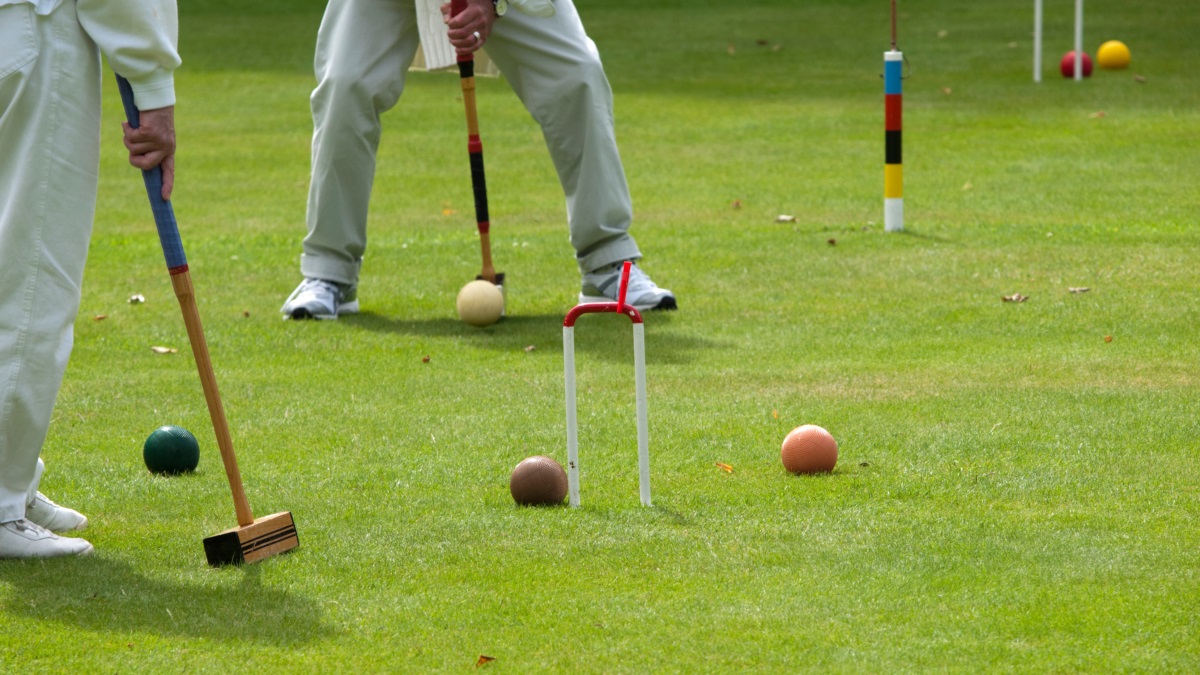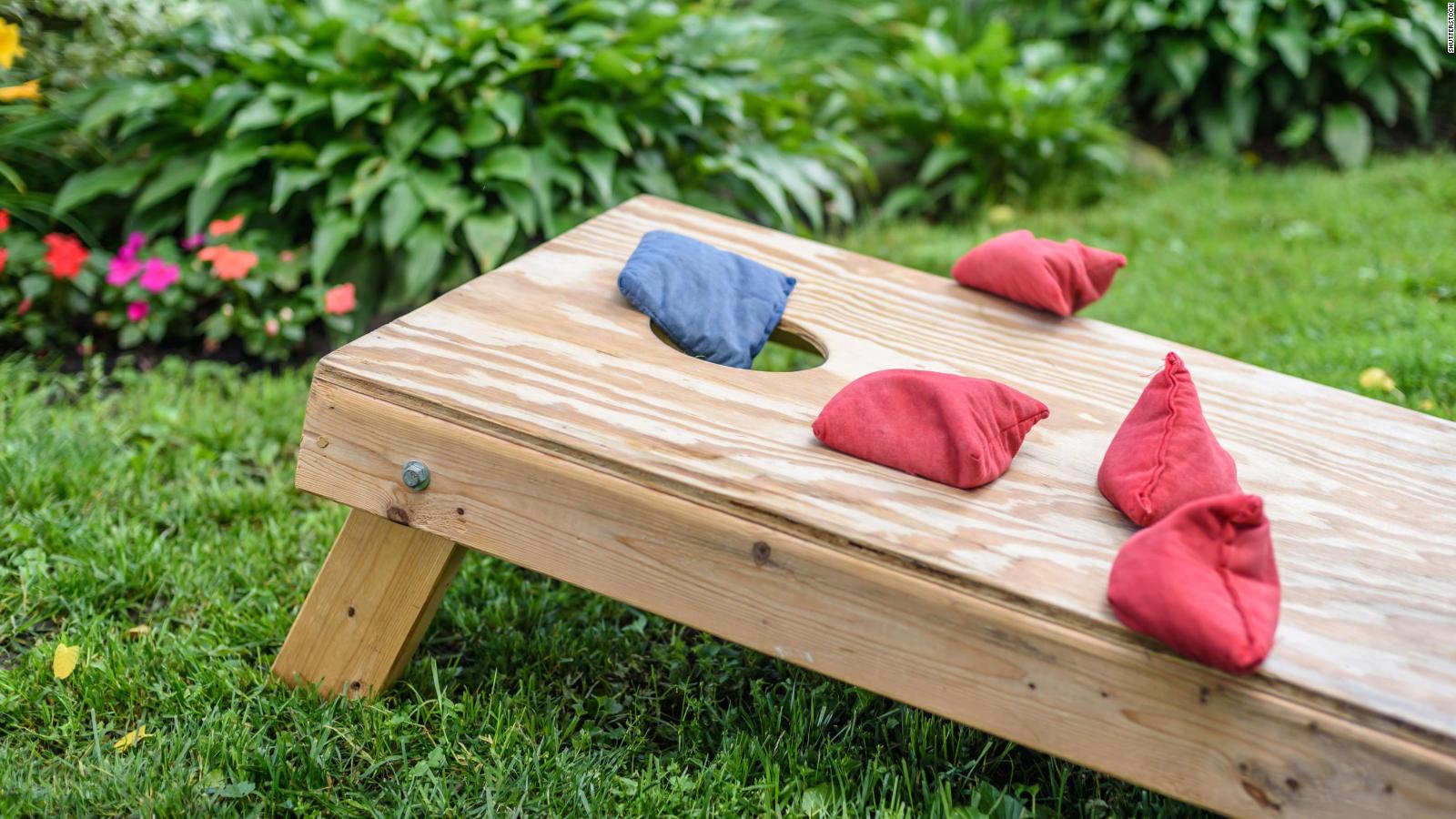Home>Gardening & Outdoor>Outdoor Recreation & Activities>How To Win At Mini Golf


Outdoor Recreation & Activities
How To Win At Mini Golf
Modified: February 18, 2024
Discover the best strategies and tips to improve your mini golf game and win every round. Perfect for outdoor recreation and activities enthusiasts. Start mastering your mini golf skills today!
(Many of the links in this article redirect to a specific reviewed product. Your purchase of these products through affiliate links helps to generate commission for Storables.com, at no extra cost. Learn more)
Introduction
Read more: How To Play Mini Golf
Introduction
Welcome to the exciting world of mini golf, where precision, strategy, and a touch of finesse come together for a thrilling recreational experience. Whether you’re a beginner looking to learn the ropes or a seasoned player aiming to refine your skills, this guide will equip you with valuable insights and techniques to elevate your mini golf game to the next level.
Mini golf, also known as putt-putt or adventure golf, offers a delightful blend of fun and challenge for players of all ages. It’s a fantastic way to unwind with friends and family, and it provides an excellent opportunity to hone your putting skills in a unique and entertaining setting.
As we delve into the intricacies of mastering mini golf, we’ll explore essential aspects such as equipment selection, fundamental techniques, course navigation, strategic gameplay, effective practice methods, and overcoming common obstacles. By the end of this guide, you’ll be well-equipped to approach the mini golf course with confidence, skill, and a winning mindset.
So, grab your putter, select your favorite colored ball, and get ready to embark on an exhilarating journey towards mini golf mastery. Let’s tee off and discover the secrets to achieving success on the mini golf course!
Key Takeaways:
- Mastering mini golf requires choosing the right equipment, mastering basic techniques, understanding the course, developing a winning strategy, practicing effectively, and overcoming common challenges. It’s a fun and skill-building recreational activity for all ages.
- Mini golf success hinges on precision, strategy, and a positive mindset. By selecting the right equipment, mastering fundamental techniques, understanding the course, developing a winning strategy, practicing purposefully, and overcoming common challenges, players can elevate their game and enjoy the delightful blend of recreation, skill development, and social camaraderie mini golf offers.
Choosing the Right Equipment
When it comes to mini golf, selecting the right equipment is crucial for achieving optimal performance on the course. Here are some key considerations to keep in mind:
1. Putter Selection:
The putter is your primary tool for maneuvering the ball into the hole. Choose a putter that feels comfortable in your hands and allows for precise control. Consider the weight, grip, and length of the putter to ensure that it complements your putting style.
2. Golf Ball:
While mini golf balls may seem standard, they can vary in weight, material, and design. Opt for a ball that feels right for your putting technique. Some players prefer heavier balls for better control, while others may favor lighter ones for increased maneuverability on tricky obstacles.
Read more: How To Score In Mini Golf
3. Footwear:
Although mini golf courses don’t have strict footwear requirements, it’s wise to wear comfortable, closed-toe shoes with good traction. This can provide stability and support as you navigate the course’s undulating terrain and various obstacles.
4. Optional Accessories:
Consider carrying a small towel to clean your ball, as well as a scorecard and pencil to track your progress. Additionally, a hat or visor can shield your eyes from the sun, allowing you to focus more effectively on each shot.
By carefully selecting your equipment, you can optimize your comfort and performance, setting the stage for a successful mini golf outing. Now that you’ve chosen the right gear, it’s time to delve into the fundamental techniques that will help you excel on the course.
Mastering the Basics
Before diving into the intricacies of mini golf strategy, it’s essential to master the fundamental techniques that form the backbone of a successful game. Here’s a closer look at these foundational skills:
1. Stance and Posture:
Position yourself parallel to the ball, with your feet shoulder-width apart and your knees slightly flexed. Maintain a relaxed posture, and ensure that your body is aligned with the intended path of the putt. This setup provides stability and promotes a smooth putting motion.
Read more: How To Open A Mini Golf Business
2. Grip and Swing:
Grasp the putter with a light but firm grip, allowing for fluid movement and control. When executing your swing, focus on a pendulum-like motion, using your shoulders and arms to propel the ball forward. Keep your wrists stable to achieve consistent accuracy.
3. Alignment and Aim:
Align the putter face with the target line, visualizing the ideal path for the ball to reach the hole. Take into account any slopes or obstacles on the green, and adjust your aim accordingly. Developing a keen sense of alignment is crucial for sinking putts with precision.
4. Distance Control:
Understanding the amount of force needed to propel the ball a specific distance is a key aspect of successful putting. Practice gauging the power of your strokes to adapt to varying green speeds and terrain features, such as inclines and declines.
5. Patience and Focus:
Mini golf rewards patience and concentration. Take your time to assess each shot, visualizing the intended trajectory and committing to your chosen approach. Minimize distractions and maintain a steady focus on the task at hand.
By honing these basic skills, you’ll lay a solid groundwork for your mini golf journey. As you grow more comfortable with these techniques, you’ll be ready to explore the nuances of course navigation and strategic gameplay, which we’ll delve into next.
Read more: How To Make A Mini Golf Course
Understanding the Course
Every mini golf course presents a unique blend of challenges, from whimsical obstacles to undulating terrain. Understanding the intricacies of the course is essential for navigating it effectively. Here’s how to approach and conquer the elements of a mini golf course:
1. Observing the Layout:
Before teeing off, take a few moments to survey the entire course. Note the placement of each hole, as well as the various obstacles and contours that define the landscape. Understanding the layout will help you formulate a strategic approach for each hole.
2. Analyzing Obstacles:
Mini golf courses often feature creative obstacles such as windmills, tunnels, ramps, and loop-de-loops. Assess the characteristics of each obstacle and anticipate how they may influence the path of your ball. Develop a plan to navigate these challenges with precision and finesse.
3. Gauging Green Speed:
Take note of the speed and texture of the putting surface. Some greens may be fast and smooth, while others could be slower and more textured. Understanding the nuances of the green’s speed will inform your approach to controlling the distance and direction of your putts.
Read more: How To Hold Mini Golf Club
4. Identifying Slopes and Breaks:
Mini golf greens often feature subtle slopes and breaks that can significantly affect the path of your ball. Pay attention to these nuances and factor them into your putting strategy. Adjust your aim and stroke to account for the natural contours of the green.
5. Adapting to Course Variations:
Mini golf courses can vary widely in terms of layout, theme, and level of difficulty. Stay adaptable and open-minded as you encounter new courses, and be prepared to adjust your playing style based on the unique characteristics of each venue.
By gaining a comprehensive understanding of the course layout, obstacles, and terrain, you’ll be better equipped to approach each hole with confidence and strategic insight. Next, we’ll explore how to develop a winning strategy that capitalizes on your newfound course knowledge.
Developing a Strategy
Effective mini golf gameplay goes beyond mere putting proficiency; it involves devising a strategic approach tailored to the nuances of each hole. Here’s how to craft a winning strategy that maximizes your chances of success:
1. Hole-Specific Analysis:
For each hole, assess the layout, obstacles, and potential challenges. Identify the optimal path to the hole, considering any barriers or tricky terrain features. Visualize your ideal approach and anticipate how to navigate the course with precision.
Read more: When Was Mini Golf Invented
2. Risk versus Reward:
Evaluate the level of risk associated with various shot options. Some holes may offer high-risk, high-reward opportunities, while others may favor a more conservative approach. Balance your willingness to take calculated risks with the potential payoff for each shot.
3. Controlling Ball Placement:
Strategically positioning your ball for the next shot is crucial. Aim to land your ball in favorable positions that set up the best angles for subsequent putts. Anticipate how your initial shot will influence your next move, and plan accordingly.
4. Adapting to Course Conditions:
Stay attuned to the specific characteristics of the course, including green speed, terrain variations, and obstacle placement. Adjust your strategy based on these factors, and be prepared to modify your approach as you progress through the course.
5. Mental Visualization:
Before executing a shot, mentally rehearse the intended path of the ball and visualize a successful outcome. This mental preparation can enhance your focus and confidence, leading to more consistent and effective putting performance.
Read more: When Does Mini Golf Close
6. Flexibility and Adaptability:
Remain flexible in your strategy, especially if unexpected challenges arise. Be open to adjusting your approach based on real-time course conditions and the outcomes of previous shots. Adaptability is a key attribute of successful mini golfers.
By formulating a strategic game plan that accounts for each hole’s unique characteristics and challenges, you’ll be better positioned to navigate the course with precision and finesse. As you put your strategy into action, effective and purposeful practice will further hone your skills, which we’ll explore next.
Practicing Effectively
Consistent and purposeful practice is the cornerstone of honing your mini golf skills and building confidence on the course. Here are some key strategies for practicing effectively and refining your putting prowess:
1. Repetition with Variation:
Focus on repeating fundamental putting techniques while introducing variations in distance, slope, and obstacle placement. This approach allows you to develop adaptability and precision in different scenarios commonly encountered on mini golf courses.
2. Targeted Skill Development:
Identify specific aspects of your putting game that require improvement, such as distance control, alignment, or navigating obstacles. Devote focused practice sessions to these areas, gradually building proficiency and confidence in each skill set.
Read more: What To Wear On A Mini Golf Date
3. Course Simulation:
Replicate mini golf course conditions as closely as possible during practice sessions. Set up makeshift obstacles, create undulating terrain using mats or boards, and vary the distances of your putts. This simulated environment can help you adapt to real-world course challenges more effectively.
4. Mental Imagery and Visualization:
Engage in mental rehearsal before each practice putt, visualizing the ball’s path and envisioning successful outcomes. This mental imagery can enhance your focus, confidence, and overall performance on the course.
5. Consistent Routine and Feedback:
Establish a consistent practice routine, dedicating regular time to refine your putting skills. Additionally, seek feedback from experienced players or instructors to gain valuable insights and identify areas for improvement.
6. Competitive Practice Scenarios:
Engage in friendly mini golf competitions with friends or fellow enthusiasts. The competitive environment can simulate the pressure and decision-making dynamics of actual gameplay, helping you refine your strategic approach and putting under varying levels of stress.
By integrating these effective practice strategies into your mini golf regimen, you’ll cultivate a well-rounded skill set and a resilient mindset that can elevate your performance on the course. However, even with diligent practice, mini golf presents its own set of challenges and obstacles, which we’ll address next to help you overcome common hurdles and enhance your overall gameplay.
Read more: What Age Is Appropriate For Mini Golf
Overcoming Common Challenges
While mini golf is a delightful pastime, it comes with its fair share of challenges that can test your skills and composure. Here’s how to tackle some common obstacles encountered on the mini golf course:
1. Navigating Tricky Obstacles:
Obstacles such as tunnels, ramps, and rotating windmills can pose significant challenges. Approach these obstacles with a strategic mindset, aiming to predict their effects on the ball’s trajectory and adjusting your shots accordingly. Practice navigating various obstacles to build confidence in handling them effectively.
2. Managing Frustration:
Mini golf, like any sport, can be frustrating at times, especially when faced with unexpected difficulties or missed putts. Embrace a positive mindset, and view challenges as opportunities for growth. Maintain composure and focus on the next shot, channeling any frustration into determination and renewed concentration.
3. Adapting to Course Variations:
Each mini golf course has its own unique layout, featuring different obstacles, green speeds, and terrain characteristics. Embrace the diversity of courses and approach each new venue with an open mind. Adaptability and flexibility in adjusting your strategy to suit the specific course conditions are key to overcoming variations in gameplay.
Read more: How Many Holes In A Mini Golf Course
4. Weather Considerations:
Outdoor mini golf courses are susceptible to weather changes, including wind and sunlight. Stay mindful of these factors and their potential impact on ball trajectory and green speed. Adjust your putting strategy as needed to accommodate changing weather conditions and maintain consistent performance.
5. Overcoming Distractions:
Mini golf courses can be lively and bustling with activity, potentially leading to distractions during gameplay. Cultivate mental focus and resilience, tuning out external distractions and maintaining concentration on each shot. Practice mindfulness and visualization techniques to stay centered and composed amidst potential disturbances.
6. Embracing the Fun Factor:
Amidst the challenges, it’s important to embrace the fun and lighthearted nature of mini golf. Approach each round with a sense of enjoyment and camaraderie, fostering a positive and relaxed atmosphere that can enhance your overall experience on the course.
By proactively addressing these common challenges and maintaining a positive, adaptable approach to gameplay, you’ll be well-prepared to navigate the intricacies of mini golf with confidence and resilience. As you continue to refine your skills and overcome obstacles, you’ll find yourself enjoying the game to the fullest, whether you’re playing for leisure or aiming for competitive success.
Conclusion
Congratulations on embarking on a journey to elevate your mini golf game to new heights. By delving into the essential aspects of equipment selection, fundamental techniques, course navigation, strategic gameplay, effective practice methods, and overcoming common challenges, you’ve gained valuable insights that will undoubtedly enhance your mini golf experience.
As you step onto the mini golf course armed with a deeper understanding of the game, remember to approach each round with a blend of skill, strategy, and lighthearted enjoyment. Embrace the unique challenges presented by each hole, and leverage your newfound knowledge to navigate the course with precision and finesse.
Whether you’re aiming to achieve a personal best score, engage in friendly competition with fellow players, or simply savor the joy of a leisurely round of mini golf, the skills and strategies you’ve acquired will serve as invaluable assets. Remember, mini golf is not just a game of precision; it’s an opportunity to cultivate focus, adaptability, and a resilient mindset in the face of challenges.
As you continue to hone your skills through purposeful practice and a positive approach to gameplay, you’ll find that mini golf offers a delightful blend of recreation, skill development, and social camaraderie. Whether you’re navigating whimsical obstacles, strategizing your approach to each hole, or reveling in the joy of sinking a perfect putt, the world of mini golf invites you to immerse yourself in an experience that’s as rewarding as it is entertaining.
So, as you prepare to tee off on your next mini golf adventure, carry with you the knowledge, skills, and enthusiasm that this guide has imparted. Whether you’re aiming for a hole-in-one or simply relishing the thrill of the game, may your journey through the whimsical landscapes of mini golf be filled with fun, skillful putting, and memorable moments with friends and family.
Now, grab your putter, select your favorite colored ball, and get ready to tee off with newfound confidence and mastery. The mini golf course awaits, ready to showcase the skills and strategies you’ve cultivated. Happy putting!
Frequently Asked Questions about How To Win At Mini Golf
Was this page helpful?
At Storables.com, we guarantee accurate and reliable information. Our content, validated by Expert Board Contributors, is crafted following stringent Editorial Policies. We're committed to providing you with well-researched, expert-backed insights for all your informational needs.







0 thoughts on “How To Win At Mini Golf”